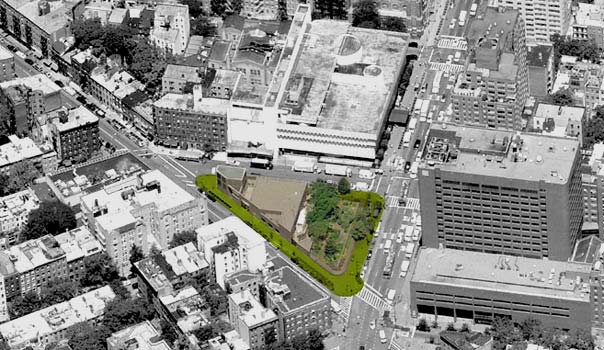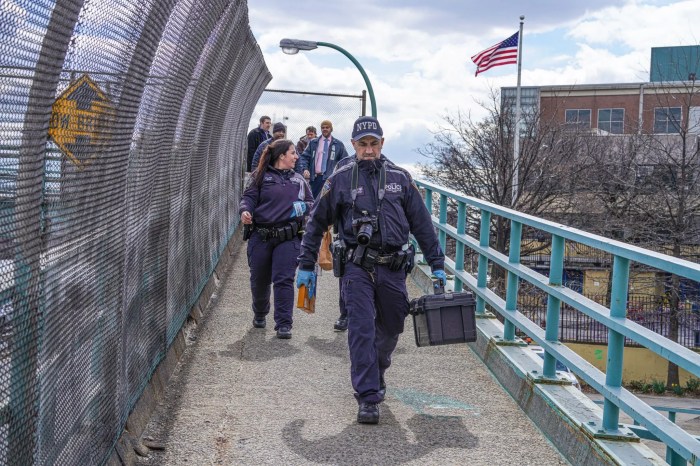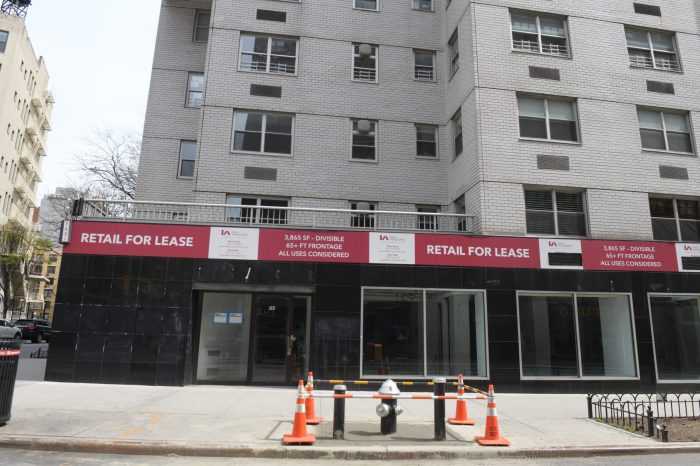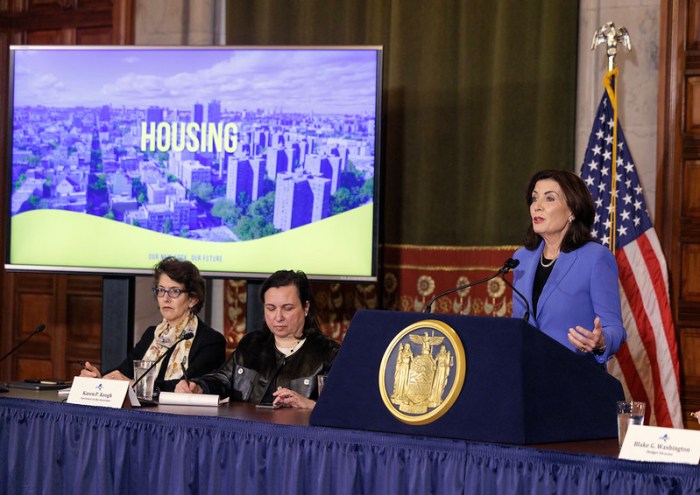BY ALBERT AMATEAU | The latest design for a living canopy of climbing evergreens and flowering vines that will become an AIDS memorial on the triangle across from the former St. Vincent’s Hospital emerged last week at a joint Community Board 2 Parks Committee forum with the AIDS Memorial Park (AMP) coalition.
Mateo Paiva of Studio a+i described how the 18-foot-high, triangular green canopy — supported on three triangular vine-clad legs — would cover the 1,600-square-foot apex of the triangle at the intersection of Seventh and Greenwich Aves.
Rows of “U”-shaped troughs across the top of the thin, steel, canopy trellis would hold earth for the plantings that would grow and intertwine across the trellis. In addition to the soil and plants, the troughs would also hold conduits for irrigation, drainage and lighting.
Similarly, the lattice of the thin, steel, triangular legs would also have troughs for the intertwining plants and the support system.
“It’s still a work in progress, so we are not releasing renderings or working plans yet,” said Christopher Tepper, co-founder of the AMP coalition, at the June 27 forum.
Tobi Bergman, co-chairperson of the community board Parks Committee, assured an impressed but curious audience last week that the proposed vertical garden was an established concept.
“It’s not a new invention,” Bergman said. “It’s been done successfully here and in Europe.”
One enthusiastic supporter nevertheless said, “It’s essential that whatever gets built is high quality, carefully maintained and fully funded.”
Under an agreement involving AMP, the residential condo in the former St. Vincent’s Hospital campus that Rudin Management is developing, and Council Speaker Christine Quinn’s Office, the coalition would pay for the design, perpetual maintenance and much of the construction cost of the AIDS memorial.
The Rudin condo will bear the cost for the infrastructure of the entire 16,000-square-foot triangle and of the design, construction and permanent maintenance of the rest of the park, except for the memorial.
The community process and design of the memorial elements are to be completed by the end of this month in order to be approved by the Landmarks Preservation Commission and the City Planning Commission.
On July 16, Community Board 2’s Parks and Landmarks committees will hold a joint meeting to finalize the AIDS memorial design, and the full board will vote on the memorial on July 19.
AMP and Rudin will jointly submit final plans for the memorial and the rest of the park, to be dedicated to St. Vincent’s 160-year service to the neighborhood and the city.
Landmarks and City Planning must approve the plans by Oct. 31 before construction can begin on the park and the memorial.
If the approvals don’t come by the deadline, Rudin will proceed with construction of the entire park, whose design by Rick Parisi has been approved as part of the land-use review for the St. Vincent’s residential redevelopment.
If the approvals do come as expected by the deadline, the coalition will proceed with construction documents for the memorial and complete them by next April. In addition, AMP must have 75 percent of the memorial funding and binding commitments for the remaining 25 percent by next April.
The cost of the memorial project was not revealed at the meeting.
If the coalition fails to secure the funding, Rudin will proceed with building the triangle park without the memorial.
The still-evolving memorial design includes a round opening, known as an oculus, in the canopy. The oculus would look down on a water feature near the center of the memorial area. First conceived as a pool, the water feature could be a shallow circle of circulating water.
The history of the community response to the AIDS epidemic and a memorial to victims, friends and caregivers would be inscribed in circular pavers on the floor of the memorial.
In the design’s latest version, seating would be on inward-facing stone benches, with armrests every 3 or 4 feet to discourage visitors from sleeping on them.
A chain surrounding the memorial has been discussed, but is still in flux. The entire park — except for the memorial — will be ringed by a 3-foot-high, wrought-iron fence.


















